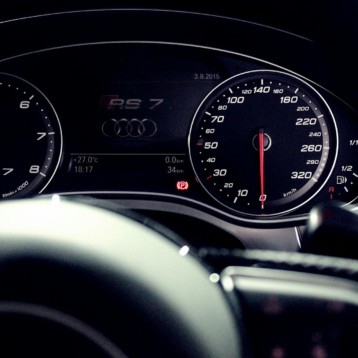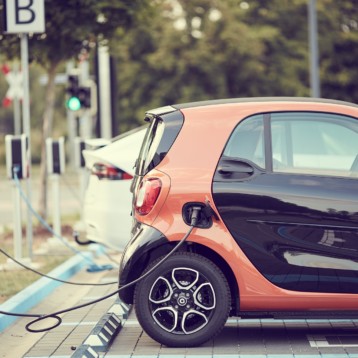Partially based on the same design principals as the original Segway scooter, PUMA uses gyroscopes and accelerometers to balance its entire frame on two wheels. The specifics are proprietary, but the motion control and balancing systems are designed to produce extremely maneuverable, very compact vehicles with what Segway claims is a true zero turn radius.
The electric propulsion system is both clean and efficient, permitting individual precise control over each wheel. The propulsion system and onboard sensors also combine to general motion control precise enough to support software-controlled tracking and braking systems. Steering is also controlled electronically instead of using traditional mechanical systems. Users can control acceleration and deceleration by using the steering console like a throttle – push it forward to go faster and pull it back to slow down or stop.
PUMA integrates a digital dashboard and GM’s OnStar technology to provide data on speed, battery life, location, traffic congestions, and other relevant information – all of which can be transferred to a handheld PDA if desired.
PUMA has yet to be tested in any type of adverse weather conditions or on anything but the fairly smooth terrain of urban sidewalks. With a maximum speed limit of 35 miles per hour, it generally travels too slowly for road usage. Given that, sidewalks are the most likely travel path in real life usage (it is unlikely the vehicle will work well when faced with rougher terrain), therefore such tests make sense.
It currently takes about three hours to fully recharge the battery. At current electricity rates, a full charge costs significantly less than one US dollar (local power rates vary enough to make exact estimates difficult). With the distance limitations and recharge times, the PUMA seems perfectly designed for commuters to drive to work, recharge during the day and drive home, but it may not be ideal for more robust usage.
PUMA is a true collaboration between Segway and GM, leveraging what each company does best. It combines Segway’s expertise in rechargeable battery technology and gyro-stabilization technology with GM’s experience with vehicle body design, navigation systems, and vehicle communication systems. The companies hope to have the PUMA available for sale by 2012.
TFOT has previously reported on several electric cars including the ElectriCar aerodynamic hybrid, designed to work solely on electric power 95% of the time, the Tesla Roadster electric sports car designed to go from 0 to 60 miles per hour in less than four seconds, the Th!nk Ox electric car capable of traveling up to 130 kilometers per hour, and Shelby’s Ultimate Aero electric car designed to cover 150-200 miles on a single 10 minute charge. TFOT has also covered Israel’s plans to establish a nation-wide electric car market.
Read more about PUMA on its Segway product page or in this Segway blog post.










